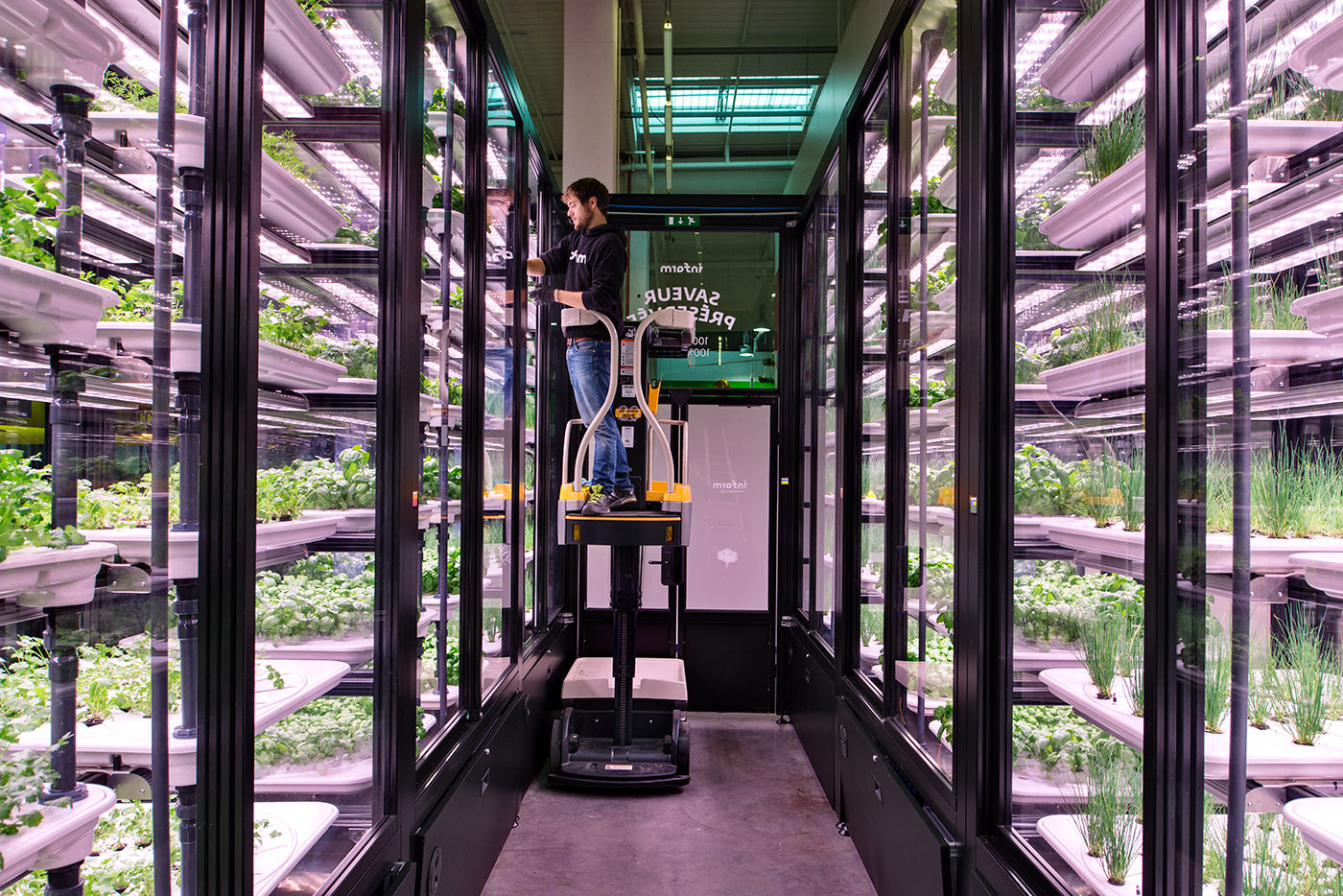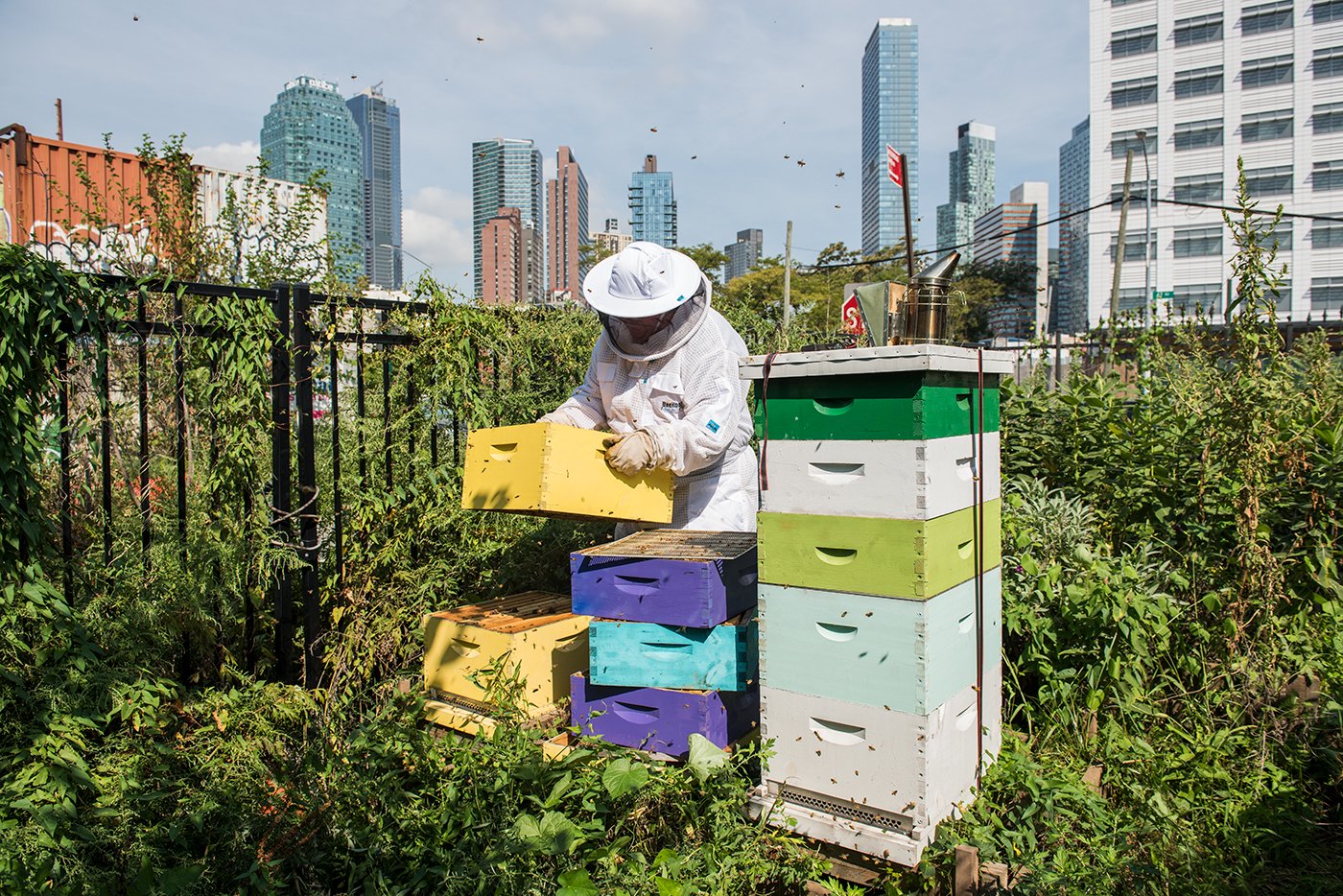
A Vertical Farm in Berlin Keeps Raising The Bar of Food Production
Writer Mónica R. Goya explores how a successful indoor farming model that was born in Kreuzberg is expanding worldwide
Infarm is a highly efficient vertical indoor farming company that deploys modular farming units inside supermarket aisles and restaurants to bring their fresh living produce closer to the final consumer. Their leafy greens and herbs are grown under artificial lighting hydroponically, meaning plants are cultivated following a soil-free method and fed on a blend of water and nutrient-rich solution. Environmental factors are not an issue for Infarm: using controlled-environment agriculture technology, they can create ideal conditions in which temperature, lighting, humidity, and even nutrients are monitored and adjusted according to the plants’ needs.
“We decided we needed to redefine the entire supply chain from start to finish"
Founded in Berlin in 2013 by Osnat Michaeli and brothers Erez and Guy Galonska, the company’s modular vertical farms—a distributed model that is easily scalable—can be found on the aisles of supermarkets across the world, from Marks & Spencer in the United Kingdom to Kroger in the United States, or Metro and Aldi in continental Europe. Their business model is based on offering retailers the plants themselves so that customers can buy the living produce: Infarm provides the technology and the farm; they grow the plants and harvest them.
“We started with the simple idea that we wanted to make fresh, pure, tasty, and nutritious produce available and affordable for everyone,” says co-founder Osnat Michaeli, Infarm’s chief brand strategy officer. “We decided we needed to redefine the entire supply chain from start to finish to make this a reality for those living in urban environments. We wanted to bring nature, and the benefits of fresh produce, fully into city life.”

Infarm’s vertical vegetable garden produces nearly four tons of aromatic herbs per year, which are sold on-site at the METRO store in Nanterre, France. (Photo: Giovanni Del Brenna, Urban Farmers)
The realization that as a society we are removed from the food-growing process and the harm it can cause—that we tend to know little about how food gets from the field to our plates—fueled the trio’s decision to distribute farms throughout the city, rather than building them outside urban centers. “In a phase of trial-and-error experimentation in 2013, we converted a 1955 Airstream trailer into our first vertical farm in one of Berlin’s most well-known urban farm spaces, Prinzessinnengarten,” says Michaeli. “That trailer became a hub of activity for a range of professions, from urban planners and designers to food activists and biodynamic farmers, all of whom we invited to explore with us the diverse challenges behind making urban farming a reality. In doing so, Infarm was born.”
Their growing system includes patented technologies and cutting-edge research and development, from plant science to data science and engineering. Over 50,000 data points—covering factors such as humidity or temperature—are collected and transmitted to the company’s cloud, allowing Infarm to control the growing conditions of their plants remotely, recalibrating as needed across their network to optimize their growing methods.

Rodrigo photographs harvested plants to help track plant growth and health, and improve production. (Photo: Giovanni Del Brenna, Urban Farmers)
As with many other businesses across most industries, they had to adapt quickly to the unpredictable circumstances triggered by the global health emergency, which brought new challenges daily. But their farming model proved resilient, allowing them to respond quickly to the needs of their clients, who were themselves establishing new procedures for producer and customer interaction in their retail spaces. “Across our global network, each of our farms is connected to the cloud, allowing us to monitor plant performance and growing environment, and make adjustments remotely,” says Michaeli. “We developed a system to guide local teams through farm installation remotely when our installation teams were unable to travel, further minimizing any potential impact from the changing pandemic environment to our operations.” In September 2020, the company announced that it had raised $170 million in investment in the first close of a Series C funding round.
“We want to continue practicing a form of agriculture that is resilient, sustainable, and beneficial to our planet"
According to Global Market Insights data, the vertical farming market is expected to multiply by almost seven by 2026, reaching a projected value of over $22 billion. Infarm expects to reach more than 46 hectares of urban land by 2025, and its aim is to become the largest distributed urban vertical farming network in the world.
“Our goal has always been to encourage cities to become self-sufficient in their food production, and this will not change,” Michaeli says. “We have secured an incredible amount of funding, which we will use to deepen the regional and local penetration of Infarm’s global farming network and complete the development of Infarm’s new generation of vertical cloud-connected farms. These new farms will save labor, land, water, energy, and food miles, contributing to a more sustainable food system. We want to continue practicing a form of agriculture that is resilient, sustainable, and beneficial to our planet, making fresh, pure, tasty, and nutritious produce available to everyone.”
This story was originally featured in Urban Farmers - The Now (and How) of Growing Food in the City. Available from June 29.
Header image: Infarm employee Rodrigo at harvest time at warehouse METRO Nanterre. (Photo: Giovanni Del Brenna, Urban Farmers)


